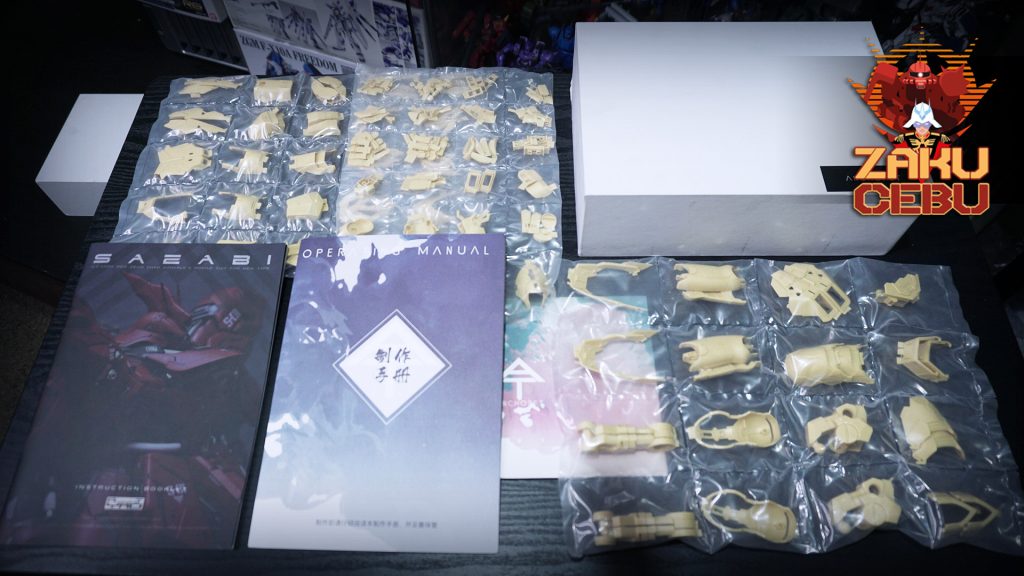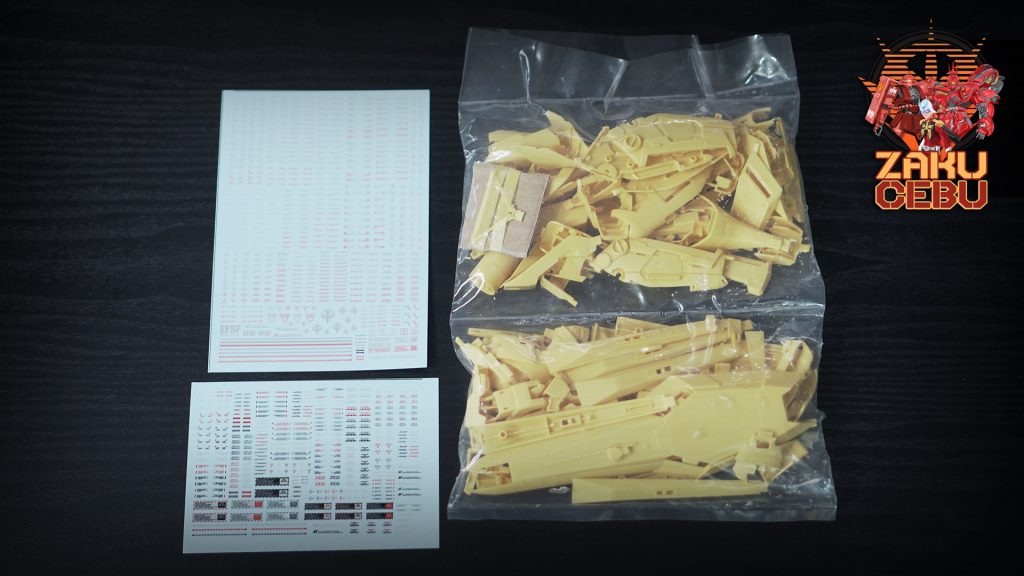There’s a substantial growing rate of Philippine based Gunpla modelers who’ve been hitting us up with the fancy and beautifully detailed Full and Conversion Resin kits that we’ve been offering. Majority of them are just accustomed to Plamo kits with zero experience and knowledge about Resin material pieces. About 60% of these people are turned off in advancing to resin projects by two main reasons: High Ticket Prices and Lack of Skill. The remaining 40% are either already return clients with previous Resin building experience or they’ve garnered enough confidence to excel into Resin to further their building skills.

We decided to compose this blog so that this would serve as a guide to why Resin kits are much more expensive than regular Plamo kits, and why you would need advanced skills in building a project with Resin pieces. Plus, we did need to get more efficient in educating our client on what to expect. We went ahead and used previously uploaded Youtube videos to serve as reference.
What is Resin anyway?
More commonly termed as a “Garage Kit,” a Resin kit is an assembly scale model kit most commonly casted using polyurethane resin. Unlike its Plamo counter parts that are injection molded using polystyrene in steel casts, these kits are molded with silicone. With silicone being more flexible than steel, the molds have more freedom in casting allowing the resin to retain more intricate detailing. This is the main reason why they look more meticulous and extremely detail oriented than regular plastic model kits. End result, they look more badass. But because of this flexibility, the casting permits excess flashing. Because of the excess material from the flashing, it requires more skill and patience in cutting, shaving, and sanding this excess material off so that fitment is precise and ultimately be able to have smoother panels prior to finishing touches. Rescribing panel lines is also expected to be done after your sanding sessions. Use of brass/copper rods and mini neodymium magnets are also to be considered to give the heavy resin pieces more rigidity to hold the weight of a scale model’s posture. Once all of this is settled, then you can now proceed to masking and painting your model kit.
For a more in depth introduction to Resin, please watch this video produced by Tatsu Hobby. Alex and his team has some great stuff they pointed out here.
Why are Resin kits so expensive?
Going back to the origins of the term “Garage Kit,” these kits are originally designed and built by highly skilled modeling enthusiasts in the comfort of their home’s garages. Not backed up by big spending corporations, acquiring raw materials in small quantities get very expensive. All the more, these garages only produce a small quantity at a time causing the expenditure-profit ratio to be high. On top of that when a silicon casting tool wears down, they wear down much faster than steel cast. So maintenance costs in tooling becomes much more expensive than steel casts. Furthermore, polyurethane resin as a raw material is more expensive than your regular polystyrene plastic.
More so, some of these small fronts are required to get licensing for commercial sales from the likes of Bandai. These license owners allow these garage companies limited time licensing. The Tokyo Wonder Festival also known as Wonfes is a semi-annual event held in Chiba, Japan. It is here where you see initial Resin prototypes with said licensing. Now not everyone can just jump on a plane to head to Japan. So scalpers come into play, buy these kits at the event and sell it for a premium online. This leads us to the next question.

What is the difference between Original Casted and Recast Resin kits?
As mentioned earlier, Original resin kits go through a tedious process from design to distribution causing mark ups on a limited run kit to go really high. Two main movements came into fruition to try to lessen the cost.
First was the B-Club brand was given birth by Bandai Namco Entertainment. With the backing of this big corporation spending, tooling and manufacturing, costing was lower. But since B-Club’s most recent release was back in 2013, these kits have gone up in pricing due to rarity and demand. And with Bandai’s leniency in allowing garage kits be sold without consequence at events like Chara Hobby, this has given out two important signals. Bandai doesn’t mind unlicensed garage kits since majority of these are conversion kits, which require a modeler to purchase mandatory base Plamo kits produced by Bandai. Also, this has given insight for opportunists to copy and recast these resin kits with lower costs in China.
To avoid any political or ethical debates, we try our best to be impartial to this gray area in the industry.

This second movement though where recast companies come into play have somewhat brought down the pricing availability of these kits because they are able to avoid design and lessen engineering costs by copying previously released original casted resin kits and because they have the factories to mass-produce these kits. But please keep in mind, these casts are still silicone based. Thus, the reason why recast kits have more flashing and excess material because the heat produced when molding has caused these casts to deteriorate faster.
This is why we always recommend getting into Original casted kits if you are just starting, and we then consider recommending getting recasts if you are more versed in the Resin scene.
In the end though, you truly get what you pay for.
What to expect when building these Resin kits?
With the introduction stuff out of the way, do you now understand why they’re expensive? Do you now believe the value in them? Do you now want to take the challenge in leveling up your modeling skills? If your answer to all these questions is Yes, then please take a look at the videos below to see how the building process works.
Henry McClellan’s tutorial to building Full Resin kits
Out of all the videos we’ve bumped into on Youtube, Henry McClellan‘s uploads are the most straight to the point and least confusing. Better have an hour of extra time since these two videos are jam packed with information.
Curioventura’s approach to building Resin Conversion kits
Now Curio Ventura is the modeler that essentially convinced us to get into the business of Gunpla. Samples of his work are littered all over UrAvgConsumer‘s Gamer’s Paradise Setup. With our background in tech, we just got intrigued!
Moving forward, let’s see Curio’s approach to building Resin Conversion kits.
Fin.
Hope this guide helped you in your research in Resin kits. Yes, it was lengthy, but we tried our best to make sure all the bases were covered. Regardless if you want to get into Resin projects or not, happy building! Sieg Zeon!
#ZakuCebu #SiegZeon
